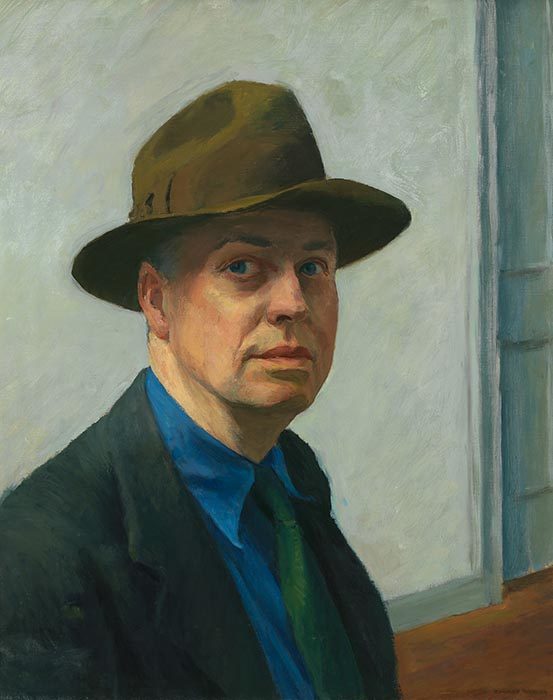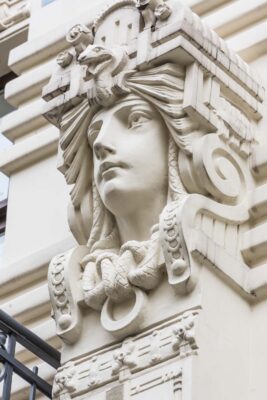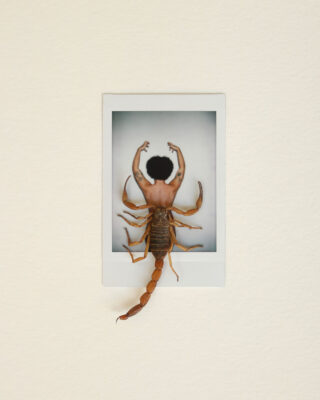
The Art Scene
HOPPER TAKES NEW YORK
In a new Whitney exhibit, the Big Apple is the muse for America’s greatest realist painter.
One evening, the Hoppers received a surprise visit at their Greenwich Village home from a reporter who, among other things, asked them what they did for fun in the city. “We’re not spectacular and we’re very private, and we don’t drink and we hardly ever smoke,” Jo rattled off protectively. Edward simply replied: “I get most of my pleasure out of the city itself.”
This exchange appears in the catalogue essay that accompanies the wonderful new Edward Hopper’s New York exhibit that opened at the Whitney Museum of American Art this week. While Hopper had a long relationship with the museum (he had eight shows at Gertrude Vanderbilt’s original Whitney Studio Club on West 8th Street before it moved uptown in 1954), this is the first Whitney exhibit to examine the reclusive artist’s relationship with the city that inspired his most iconic works.
“Edward Hopper was a man of the city, New York City. He was an observer … a flâneur, a spectator of modern life,” says Whitney director Adam Weinberg. But as exhibit curator Kim Canaty points out, “Hopper famously detested skyscrapers and the increasing verticality of the city.” So instead of capturing New York’s changing skyline, the artist’s most-celebrated works portray everyday shopfronts, diners, theaters, train cars, and apartments—often with solitary figures spotlighted through a window. (When asked about Nighthawks, his best-known work, Hopper recalled, “unconsciously, probably, I was painting the loneliness of a large city.”)


“What really interested him with windows in a city is the very sense that the public and private merge,” Conaty explains. “It’s almost something we acknowledge in living in a major city, so close to our neighbors.” In fact, seeing all of Hopper’s ‘window paintings’ together in this exhibit offers a visceral, voyeuristic peepshow into anonymous New Yorkers’ personal lives, at work, at home, on the train, and out on the town.
Marvelous ephemera from the Hopper archives is also on display for the first time, revealing insights into the artist’s own city life. A collection of colorful theater ticket stubs, each annotated with the production title on the back, indicates that he and his wife, Josephine, went to the theater—a lot. The couple not only attended classics, but scandalous productions, too, like Edouard Bourdet’s The Captive, in 1926, which featured Broadway’s first lesbian couple. “We not only see that Hopper and Jo, famously frugal, loved sitting in the balcony, but also where they went, many of which are no longer extant,” says Conaty.
Indeed, the show could just as easily have been called Edward Hopper’s ~Lost~ New York: The Sheridan Theatre he painted in 1937 is gone. So too are the eateries and social customs captured in other paintings on view, like the city’s beloved Automats and innovative “Tables for Ladies” introduced by restaurants in the 1920s to cater to professional women seeking a safe space to dine alone during the workday. (The accompanying panel tells us that, “before this time, lone female customers in public were often assumed to be sex workers.”)
But for a man known to be extraordinarily private, the most surprising revelation is that Hopper often appealed to city officials—including the powerful urban-planner Robert Moses—to protect Washington Square Park. Hopper actually spent most of his career facing it: He moved into 3 Washington Square North at the age of 31, and lived there until his death, at 84, in 1967. The skylit studio Hopper shared with Jo, also an artist, faced north on the fourth floor.
With his grousing about park security and fears about NYU swallowing the neighborhood, Hopper’s correspondence with Moses reads like some of the posts you’d find on Nextdoor today. In one 1936 letter displayed in the exhibit, Moses reported back to Hopper that: “Although the Police Department is considerably handicapped by a shortage of patrollmen, they have assigned a uniformed man to this area.”
A decade later, when the artist learned that NYU had leased three neighboring buildings on Washington Square North—including the one he’d been working out of for over 33 years—Hopper again wrote to Moses: “We the tenants of No. 3 and others who will suffer from this deal are convinced … that the real purpose of the University is to continue with its acquisition of property on the Square which it hopes to surround eventually, thus making Washington Square Park its campus…”



Moses, in turn, recommended that Hopper meet with NYU’s Chancellor to discuss, but warned that: “In my experience as a public official, and especially in connection with parks, I have never found any consensus of opinion nor anything approaching an agreement about Washington Square and adjacent property on the part of the many different groups and interests living in the neighborhood.”
In these exchanges, “we’re seeing, for the first time, how Hopper was perhaps what we might call a preservationist,” says Conaty. “He’s asking to save his building in Washington Square and to try to preserve the history of that neighborhood, to keep it as an artists’ center. He’s really trying to fight off gentrification.”
In hindsight, Hopper was right to be concerned: NYU has long since turned Washington Square into its de facto campus and his old studio is now secreted away on the top floor of its School of Social Work. Moses also had Greenwich Village residents pegged: As DP reported this summer, they still can’t agree on what’s best for their local park.
Edward Hopper’s New York continues until March 5, 2023 at the Whitney. Reserve timed tickets here. Robert Moses is also the subject of a new, sold-out David Hare play that just opened at the Shed.



